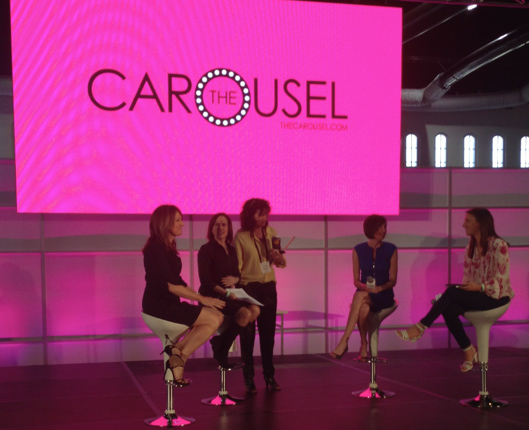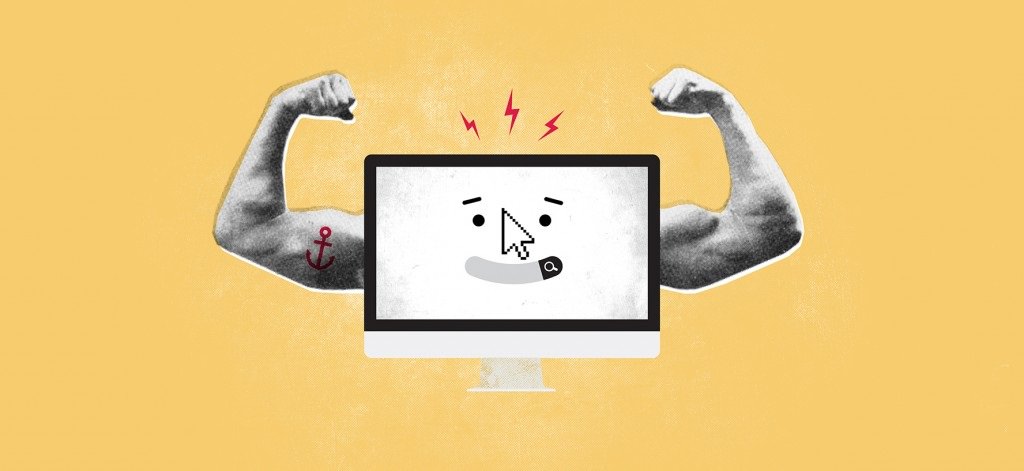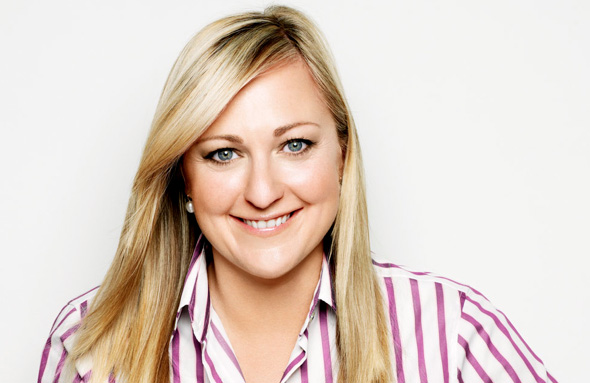With additional reporting by Alan Smith of Digivizer.
![robyn-foyster[1]](https://lhagenda.com/wp-content/uploads/2015/11/robyn-foyster1.jpg) Robyn Foyster’s career straddles the established heritage media and its upstart disruptor, social media.
Robyn Foyster’s career straddles the established heritage media and its upstart disruptor, social media.
Moving from a successful career in mainstream media that embraced Australia, the United Kingdom and the US, she founded Foyster Media and its primary outlet, TheCarousel.com, in early 2013 as a mobile lifestyle destination for women offering expert news and advice across fashion, beauty, health, food, home, parenting and bridal.
Since then, she has grown Foyster Media and TheCarousel.com to offer production and content management services to commercial clients. And she’s done so by tapping mainstream media talent and bringing it into the social media world.
“The digital media landscape is moving at an incredible pace,” Robyn, also a Telstra Influencer, says. “I’ve had a steep learning curve particularly because I wanted to apply best in class practice across everything from SEO to innovative content creation particularly skewed towards high mobile video traffic. We’ve tried various formats across both the advertising platforms we use to the mobile interface and types of content we create. We’re always trying new things and have learned by our mistakes and our successes. “
Beginnings
Robyn’s early career was in mainstream broadcast and print media, and was at the start of many innovations that we now take for granted. She was part of the team that conceived the ‘Kochie’s Angels’ segment on Channel 7’s Sunrise program in the early 2000s here in Australia, now a familiar segment and one much copied by the station’s rivals. As she points out, “to have a regular segment composed of mainly women, talking about topics of direct relevance to women, using panellists of the stature of Ita Buttrose, the late Charlotte Dawson and Sarah Wilson, simply hadn’t been done before.” It’s a concept she’s adapted as The Moral Maze on Thecarousel.com with TV psychologist Jo Lamble as the host.
…to have a regular segment composed of mainly women, talking about topics of direct relevance to women, using panellists of the stature of Ita Buttrose, the late Charlotte Dawson and Sarah Wilson, simply hadn’t been done before.
She started her media career, though, in newspapers. She was a copy girl on The Australian, and was one of just three graduates to join AAP Reuters on graduating from Sydney University. During these early stages in her career, she covered, she says, “everything from horse racing to the police round!”
She moved to London’s Fleet Street (when Fleet Street was still the national media hub for print newspapers in Britain) in 1988, and later became the Women’s Editor on the UK’s Daily Express and On Today Newspaper – Britain’s first full-colour daily newspaper. She was a Consumer Columnist and then Environment Writer, all unusual postings in their time. “The Today newspaper broke many moulds. It’s best-remembered as being Britain’s first full-colour newspaper, but it also led with the topics and stories it was prepared to consider and run that other papers wouldn’t,” explains Robyn. “We were the first newspaper to name and shame government ministers for not using catalytic convertors, we produced the first green shopping guide in the newspaper, and we were one of the first to campaign against the use of aerosols and campaign against racism. These ideas seem almost quaint nowadays, but at the time they were ground-breaking. It was wonderful to be part of this new media thinking, at the heart of Fleet Street.”
Expanding horizons
 From Fleet Street, Robyn moved to Los Angeles, and wrote columns for Today, the Sunday Times and the Mail on Sunday in Britain, and The Australian Women’s Weekly. Los Angeles also saw her first foray into broadcast media, delivering reports on-camera for the UK’s Big Breakfast television show. This ultimately led to her return to the UK to join GMTV, which had won the contract to broadcast the breakfast program on British commercial television in the early 1990s. She was responsible for driving the profile of the program to the point that it became the natural choice for show business stars of the calibre and popularity of the Spice Girls, BoysZone, and Diana Ross when on tour. The appearance of the Spice Girls on GMTV was their first television appearance.
From Fleet Street, Robyn moved to Los Angeles, and wrote columns for Today, the Sunday Times and the Mail on Sunday in Britain, and The Australian Women’s Weekly. Los Angeles also saw her first foray into broadcast media, delivering reports on-camera for the UK’s Big Breakfast television show. This ultimately led to her return to the UK to join GMTV, which had won the contract to broadcast the breakfast program on British commercial television in the early 1990s. She was responsible for driving the profile of the program to the point that it became the natural choice for show business stars of the calibre and popularity of the Spice Girls, BoysZone, and Diana Ross when on tour. The appearance of the Spice Girls on GMTV was their first television appearance.
“It was wonderful being part of the so-called Australian media invasion,” says Robyn. “Rupert Murdoch had broken the power of Britain’s print unions at Wapping in the mid-eighties, which in turn led to newspapers such as Today being able to open. This new competition in turn changed the broadcast landscape, particularly in the breakfast segment. It was a wonderful experience being part of this evolving landscape.”
Delving into the new media world
Thecarousel.com is a blog that differs from others on a number of levels. Robyn says, “From its inception we wanted it to invoke memories of childhood in our audience, to make it easy to find and absorb content, and do all of this on mobile formats from the beginning. And we wanted to create something that was fun and informative, that served the changing ways people consume content. We’re all consuming more, in more ways, using multiple channels, with more interaction. That’s what attracted me from the mainstream media, which was successful but safe. I wanted to test the limits of the new media world, and be part of those changes!”
What, then, was the scariest part of shifting from mainstream media to the new media world?
“I’d always had a strong involvement in digital,” Robyn replies. “For instance, I oversaw the first redesign of The Australian Women’s Weekly website since it’s launch ten years earlier. And, as the publisher of Harper’s BAZAAR, Cosmopolitan, madison and Grazia and Woman’s Day, I had overall responsibility for both the print and digital assets of the business. But setting up my own digital site meant I was actually a small niche publisher taking on the bigger media companies. While it feels like David and Goliath at times, I love the sheer challenge of it. The fact is we are very much holding our own in a competitive market and that’s because we have the ability to be nimble and quick. We don’t have the legacy of a traditional media and can make decisions that allow us to innovate quickly and we invest heavily in that and original content including video which is our core strength.”

“Also, I learned at the outset that it was important to have your ducks in a row. When I was first starting my business, I caught up with Joe Cross from Reboot With Joe . He became famous for his juicing documentaries and videos. He loved my idea about starting up TheCarousel.com and, sharing some of his own experiences, said: “Startup companies and entrepreneurs need three things – a great idea, money, and balls of steel.” He then quickly added: “There’s one more thing – and that’s luck”. He was right.”
Startup companies and entrepreneurs need three things – a great idea, money, and balls of steel.” He then quickly added: “There’s one more thing – and that’s luck”. He was right.
Start-up stumbles
We asked Robyn if there was anything she wished she could do over when starting up TheCarousel.com. After all, starting up any new business always comes with challenges; some that can seem insurmountable until they’ve been surmounted.
Looking back, I would have gone to market earlier with less functionality and added to it later.
“Building a website can involve a huge amount of money,” she says. “I wanted all the bells and whistles and looked at some of the top websites such as Mashable. Looking back, I would have gone to market earlier with less functionality and added to it later. The fact is you need to constantly update and refresh the site anyway and it’s best to do that once you’ve got learnings about what works best. Within ten months I was already redesigning the site with new innovations like a toggle on mobiles to switch from a straight feed of videos to a mix of videos and article. It’s an innovation I’m proud of because it’s unique in the market!”
Staying motivated
For Robyn, her motivation comes from a continuing passion for journalism. “Being a journalist is all I’ve ever wanted to be,” she explains. “Today’s social media, and the opportunities provided by the Internet and today’s connected world, are the latest incarnation of journalism. It’s new, and different, and exciting. Everything is changing at such a rapid pace, and it’s fabulous being able to talk about technology and to create new audiences.”
Thecarousel.com reflects the interests of its readers, but also leads its readers into new areas of interest. “We report, but we also stimulate,” comments Robyn. She and her team always have one overriding objective, though: “to follow the eyeballs. There’s no point missing our audience or our clients’. Which means we have to be experts at content – its identification, its production, and its presentation. And that’s where, I think, heritage and social media skills combine and overlap.”
Future plans
Robyn plans to take thecarousel.com to new markets in other parts of the world. “Content is global and we need to be global to.” So Asia, the US and the UK beckon.
What of the near-future? What are the topics and trends Robyn and her team will be looking at in early 2015? “Health, and the role technology can play in staying healthy, is a real interest to our audience,” explains Robyn, “and this fits alongside wearable technology very closely. And women have a different interest and perspective on technology from men, one that still isn’t catered for as much as it should be. We aim to change that, and do so by talking about technology in their language.”
Technology has been at the centre of Robyn Foyster’s professional life for her entire career, and it’s changed markedly over the past 20 years or so. “I started by dictating breaking stories on the phone to a copydesk,” she explains. “In many cases, I’d have just the basic facts, and the rest had to be filled in from expert, background knowledge, to fill space in print, or a segment live to air. So we would also maintain vast libraries of press cuttings. If a story broke in a suburb of Los Angeles for example, we’d be able to research what else had happened there in the previous six months, who lived there, and so on. There was, of course, no Internet, no Google, and no cloud!”
Modern-day challenges
Today’s interconnected world makes life a lot easier, but speed also leads to inaccuracy, and sub-editing is now often done overseas, which can also lead to misinterpretations and missed subtleties.
“Today’s media is about content,” says Robyn. “Companies as varied as Telstra and K-Mart are creating their own original content because they are now publishers is their own right. There is also a wealth of bloggers creating their own content. The onus on those of us who produce, curate and publish content is to uphold the best standards of traditional journalism while providing value in new ways. If we fail, we lose the trust of our readers. Without that, we cease to exist. I love the challenge!”
The onus on those of us who produce, curate and publish content is to uphold the best standards of traditional journalism while providing value in new ways.
Robyn’s tips for budding journalists and entrepreneurs
- You need to be able to say no. It’s really tempting to try to cover too much ground. What’s important is to focus on the main goals and you can only achieve those objectives by being clear and directional. You also need to back yourself and surround yourself with a strong team who share your vision.
- (About breaking into the new media industry) There is no more exciting time to break into the digital landscape than now. Make new technologies your friend. Be disruptive. Think out of the box. You will see more opportunities opening up because the cost of starting up website businesses are less than ever and yet the power of technology is growing. The key trends are connectivity, cloud computing, devices and funding. All four trends are helping to make it easier to startup. This means there will be more jobs particularly for early adopters and those who embrace the new.
Find out more about Robyn and read some fantastic lifestyle articles at http://thecarousel.com/!








![robyn-foyster[1]](https://lhagenda.com/wp-content/uploads/2015/11/robyn-foyster1.jpg) Robyn Foyster’s career straddles the established heritage media and its upstart disruptor, social media.
Robyn Foyster’s career straddles the established heritage media and its upstart disruptor, social media. From Fleet Street, Robyn moved to Los Angeles, and wrote columns for Today, the Sunday Times and the Mail on Sunday in Britain, and The Australian Women’s Weekly. Los Angeles also saw her first foray into broadcast media, delivering reports on-camera for the UK’s Big Breakfast television show. This ultimately led to her return to the UK to join GMTV, which had won the contract to broadcast the breakfast program on British commercial television in the early 1990s. She was responsible for driving the profile of the program to the point that it became the natural choice for show business stars of the calibre and popularity of the Spice Girls, BoysZone, and Diana Ross when on tour. The appearance of the Spice Girls on GMTV was their first television appearance.
From Fleet Street, Robyn moved to Los Angeles, and wrote columns for Today, the Sunday Times and the Mail on Sunday in Britain, and The Australian Women’s Weekly. Los Angeles also saw her first foray into broadcast media, delivering reports on-camera for the UK’s Big Breakfast television show. This ultimately led to her return to the UK to join GMTV, which had won the contract to broadcast the breakfast program on British commercial television in the early 1990s. She was responsible for driving the profile of the program to the point that it became the natural choice for show business stars of the calibre and popularity of the Spice Girls, BoysZone, and Diana Ross when on tour. The appearance of the Spice Girls on GMTV was their first television appearance.